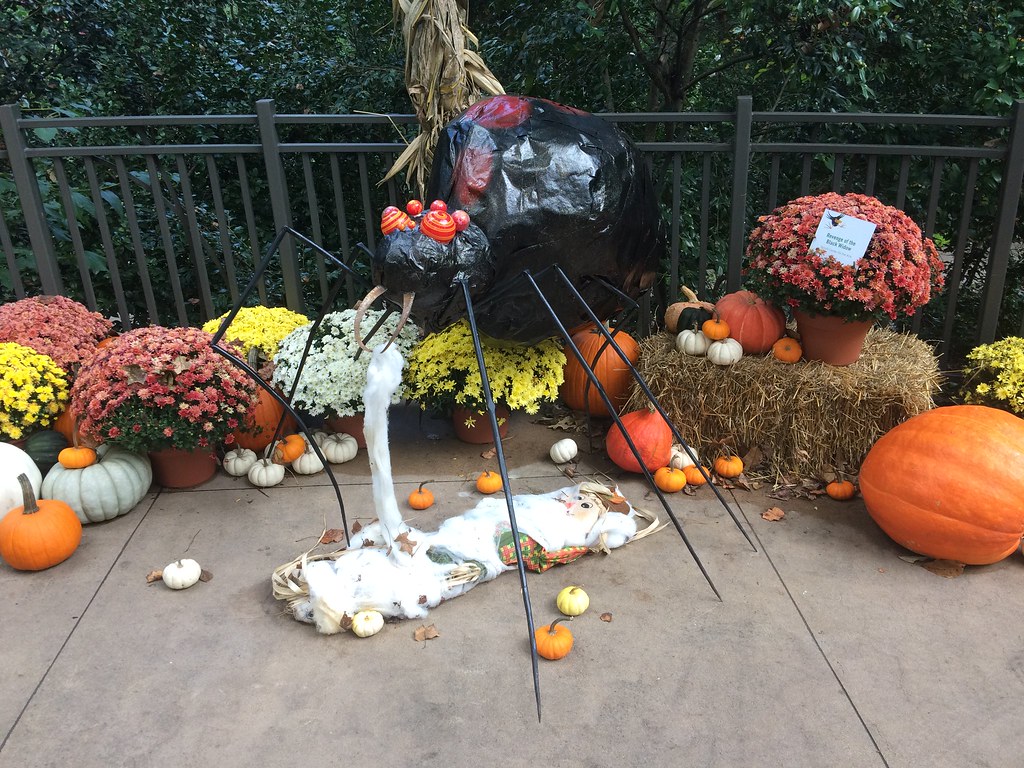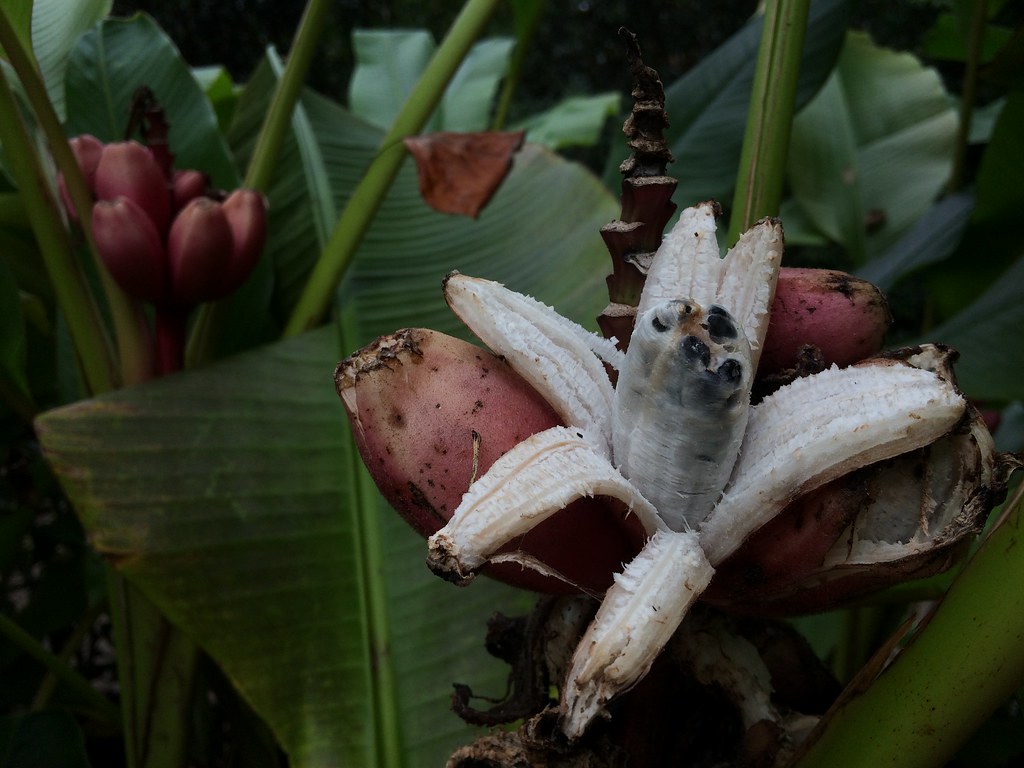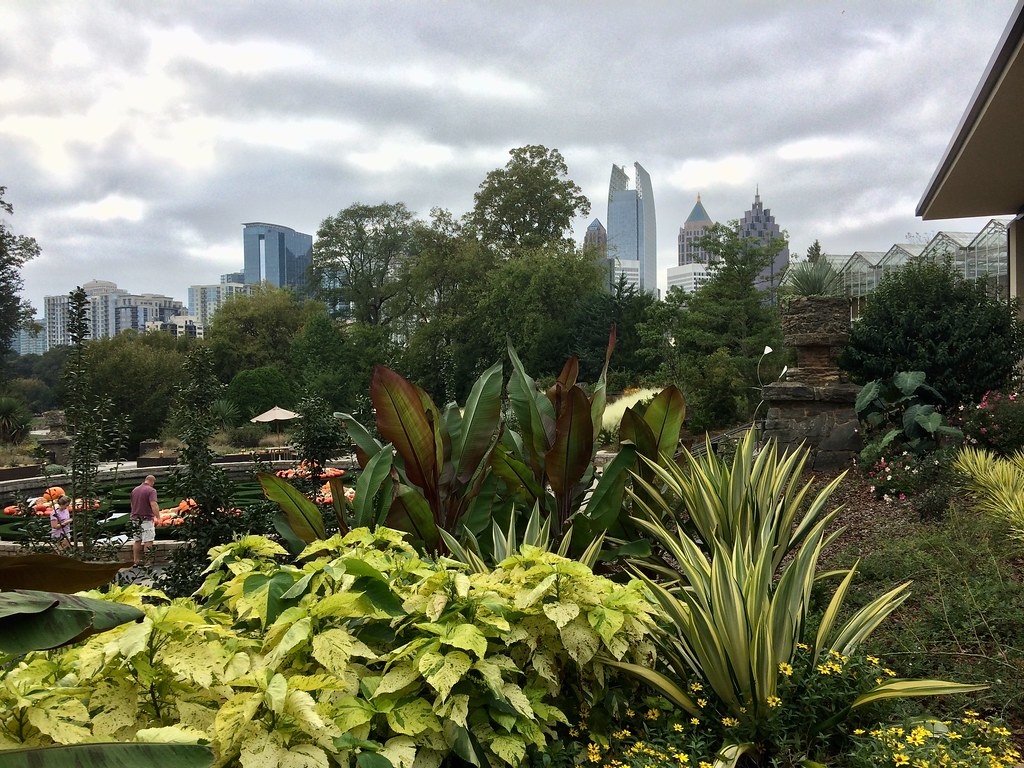The Atlanta Botanical Garden has, hands down, the best cooking program of any botanic garden that I have visited. So many gardens do a great job of showcasing and educating visitors about important food crops, but the Atlanta Botanical Gardens really shines in their plant-to-plate education.
The Edible Outdoor Kitchen is clearly designed for visitor education. The kitchen features an extensive island that includes a cooking range with plenty of counter space and a bar for visitors to get a close look at the demonstration. There is a mirror above the island to allow all the class participants -- even the ones in the back row -- to get a good view of the chef at work.
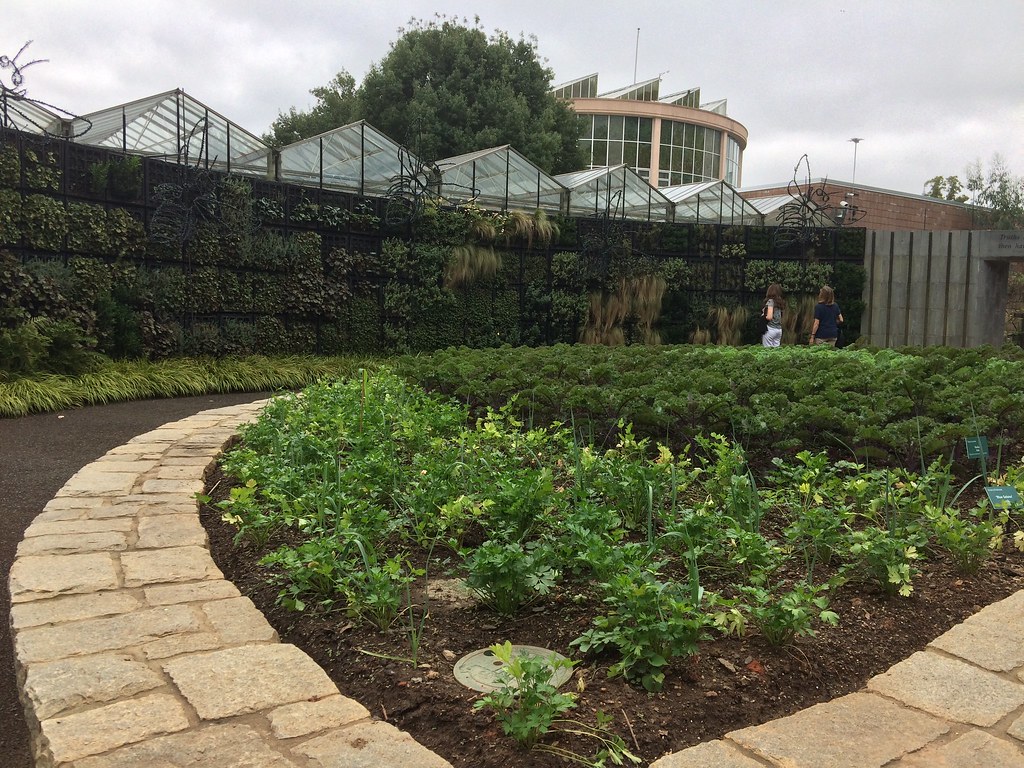 |
| The Edible Garden at the Atlanta Botanical Garden |
The kitchen is located in the Atlanta Botanical Garden's Edible Garden. The Edible Garden has impressive, large stonework raised beds that showcase plants at the visitor's eye level. In the center of the first garden room is a water feature that, on past visits, has been used to grow rice. The first backdrop to the garden are a variety of espalier fruit trees. The second is an extensive living wall that has herbs and ornamental plants. There are also formal in-ground plots and a berry patch.
 |
| Chef Julia LeRoy is a garden chef at the Atlanta Botanical Garden |
Class participants didn't simply learn how to prepare the dish -- Chef LeRoy encouraged visitors to consider alternatives to the recipe by asking questions like, "What are some other Georgia apples that are good for baking?"
If I had seen the finished product before attending the class, I might have thought to myself that it was too complicated for me to attempt. But after Chef LeRoy walked us through the steps, it didn't seem so tricky. She also gave some tips for alternatives that might be a little easier, like substituting rice for the quinoa or by purchasing roasted walnuts rather than roasting at home.
The chef also discussed some of her philosophy on cuisine. "I like to make healthy meals without putting too much thought into it. I don't need to see the nutritional breakdown," she said, "I just want to enjoy it." And that kind of gets to the heart of the Garden Chef Demo program. The Atlanta Botanical Gardens offers these classes to help visitors make the connection that fruits and vegetables can be prepared simply to create delicious, healthy meals.
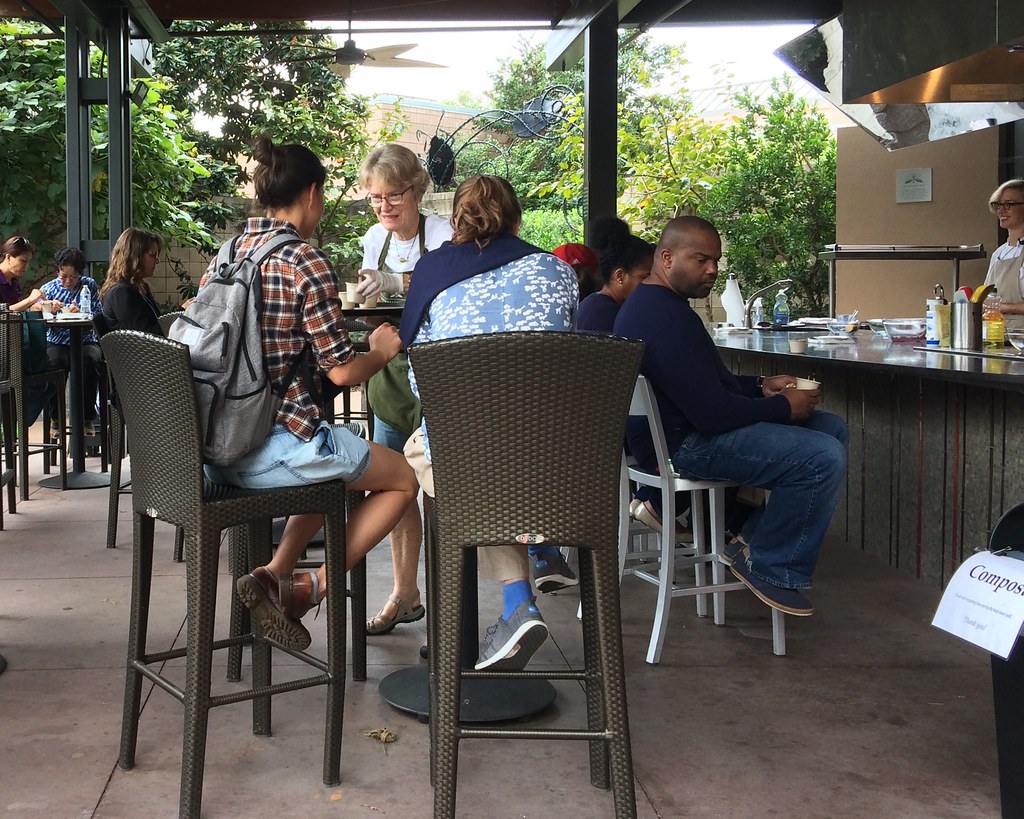 |
| Outdoor Kitchen Assistant gives the class samples |
In conclusion, if you happen to visit the Atlanta Botanical Garden on a weekend, consider setting aside roughly half an hour.to check out one of these classes. I've visited a few times where I've been on kind of a tight schedule, and I always kicked myself afterwards for not allowing time to sit in on the class. The Edible Outdoor Classroom is located at fair distance from the Hardin Visitor Center, Longleaf Restaurant, and other seating areas (besides garden benches), which makes it a good spot for visitors to take a break from exploring the gardens.
If you only have time to pause for a moment rather than attend a full class, never fear. The Atlanta Botanical Garden does post all of the class recipes online, so don't stress too much about missing out. In addition to the recipes from the most recent classes, the website also seems to have the recipe for every dish that has been prepared in the Garden Chef Demos since 2010. What a great resource!
Other important considerations when planning your trip:
- Garden Chef Demos:
- May - October, 12 p.m., 1 p.m. and 2 p.m. Saturdays and Sundays
- Hours of operation:
- April - October, 9 a.m. to 7 p.m. Tuesday through Sunday
- November - March, 9 a.m. to 5 p.m. Tuesday through Sunday
- Closed Mondays, Thanksgiving, Christmas, and New Years day
- *Admission:
- Adults: $21.95
- Youth (3-12): $15.95
- Members and children under 3: Free
- Parking:
- 0 - 30 minutes: Free
- 31 - 60 minutes: $2
- Additional 30 minutes: $1
- Daily Maximum: $15
- Accessibility:
- Virtually the entire garden is accessible. I did not note any areas that could not be reached by one way or another.
- Wheelchairs available at the Visitors Center on a first come first serve basis.
- Electric mobility scooters may be rented.
- Pets:
- Restricted to service animals only.
- Dogs are allowed for the annual "Reindog Parade" event.
- Atlanta Botanic's guide to Garden Etiquette is available for review.
 |
| Class participants get to sample the dish prepared |
*Are you a member of your local public garden? Ask if membership includes participation in the American Horticulture Society's Reciprocal Admissions Program. By supporting your local garden, you and one guest could visit the Atlanta Botanical Garden for free.
To see more photos of any of my visits to the Atlanta Botanic Garden, check out my flickr stream.
To see more photos of any of my visits to the Atlanta Botanic Garden, check out my flickr stream.
If you have any questions, ideas, or suggestions, leave a comment or shoot me an email.
Does your local public garden or garden club offer culinary classes? What are they like?
When is the last time you attended a cooking class? What dish did you prepare?


